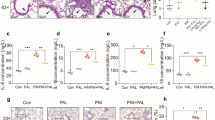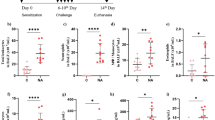Abstract
Exposure to high levels of atmospheric particulate matter (PM) with an aerodynamic diameter of less than 2.5 µm (PM2.5) is associated with increased risk of respiratory injury, hospitalization, and respiratory death. The mechanism underlying the correlation between PM2.5 exposure and adverse health effects has not been fully elucidated, but oxidative stress due to PM2.5 appears to be an important molecular mechanism in PM2.5-mediated toxicity. The aim of this study was to determine the effects of ononin, a major isoflavone, on PM2.5-induced oxidative stress, and the mechanisms underlying these effects. Human pulmonary artery endothelial cells (HPAECs) were treated with PM2.5 and then ononin. Exposure to PM2.5 decreased cell viability in HPAECs in a time- and dose-dependent manner, possibly due to increased release of extracellular lactate dehydrogenase and generation of intracellular reactive oxygen species. PM2.5-induced oxidative damage was observed to occur via alterations to superoxide dismutase and catalase activities. Serum- and glucocorticoid-inducible kinase 1 (SGK1), a crucial cell survival factor, was downregulated by PM2.5. However, ononin treatment increased cell viability, decreased oxidative stress, and recovered the expression of SGK1 cell survival genes. Additionally, ononin increased the phosphorylation of mammalian target of rapamycin (mTOR) and dramatically suppressed the PM2.5-induced expression of toll-like receptor 4, MyD88, and the autophagy-related proteins LC3 II and Beclin 1. These findings indicate that ononin exhibits pulmonary protective effects against PM2.5-induced lung injury via inhibition of oxidative stress and mTOR-dependent autophagy pathways and is thus a potential therapeutic agent for PM2.5-induced lung injury.
Similar content being viewed by others
References
Kim, K. H., E. Kabir, and S. Kabir (2015) A review on the human health impact of airborne particulate matter. Environ. Int. 74: 136–143.
Lee, W., S. K. Ku, J. E. Kim, S. H. Cho, G. Y. Song, and J. S. Bae (2019) Inhibitory effects of black ginseng on particulate matter-induced pulmonary injury. Am. J. Chin. Med. 47: 1237–1251.
Maier, K. L., F. Alessandrini, I. Beck-Speier, T. P. J. Hofer, S. Diabate, E. Bitterle, T. Stoger, T. Jakob, H. Behrendt, M. Horsch, J. Beckers, A. Ziesenis, L. Hultner, M. Frankenberger, S. Krauss-Etschmann, and H. Schulz (2008) Health effects of ambient particulate matter—biological mechanisms and inflammatory responses to in vitro and in vivo particle exposures. Inhal. Toxicol. 20: 319–337.
Anderson, J. O., J. G. Thundiyil, and A. Stolbach (2012) Clearing the air: a review of the effects of particulate matter air pollution on human health. J. Med. Toxicol. 8: 166–175.
Brunekreef, B. and S. T. Holgate (2002) Air pollution and health. Lancet. 360: 1233–1242.
Liu, C. W., T. L. Lee, Y. C. Chen, C. J. Liang, S. H. Wang, J. H. Lue, J. S. Tsai, S. W. Lee, S. H. Chen, Y. F. Yang, T. Y. Chuang, and Y. L. Chen (2018) PM2.5-induced oxidative stress increases intercellular adhesion molecule-1 expression in lung epithelial cells through the IL-6/AKT/STAT3/NF-kappaB-dependent pathway. Part. Fibre. Toxicol. 15: 4.
Birben, E., U. M. Sahiner, C. Sackesen, S. Erzurum, and O. Kalayci (2012) Oxidative stress and antioxidant defense. World Allergy Organ J. 5: 9–19.
Chirino, Y. I., Y. Sanchez-Perez, A. R. Osornio-Vargas, R. Morales-Barcenas, M. C. Gutierrez-Ruiz, Y. Segura-Garcia, I. Rosas, J. Pedraza-Chaverri, and C. M. Garcia-Cuellar (2010) PM(10) impairs the antioxidant defense system and exacerbates oxidative stress driven cell death. Toxicol. Lett. 193: 209–216.
Schieber, M. and N. S. Chandel (2014) ROS function in redox signaling and oxidative stress. Curr. Biol. 24: R453–R462.
Yi, S., F. Zhang, F. Qu, and W. Ding (2014) Water-insoluble fraction of airborne particulate matter (PM10) induces oxidative stress in human lung epithelial A549 cells. Environ. Toxicol. 29: 226–233.
Viola, G., R. Bortolozzi, E. Hamel, S. Moro, P. Brun, I. Castagliuolo, M. G. Ferlin, and G. Basso (2012) MG-2477, a new tubulin inhibitor, induces autophagy through inhibition of the Akt/mTOR pathway and delayed apoptosis in A549 cells. Biochem. Pharmacol. 83: 16–26.
Kouassi, K. S., S. Billet, G. Garcon, A. Verdin, A. Diouf, F. Cazier, J. Djaman, D. Courcot, and P. Shirali (2010) Oxidative damage induced in A549 cells by physically and chemically characterized air particulate matter (PM2.5) collected in Abidjan, Cote d’Ivoire. J. Appl. Toxicol. 30: 310–320.
Cadwell, K. (2016) Crosstalk between autophagy and inflammatory signalling pathways: balancing defence and homeostasis. Nat. Rev. Immunol. 16: 661–675.
Chen, Z. H., Y. F. Wu, P. L. Wang, Y. P. Wu, Z. Y. Li, Y. Zhao, J. S. Zhou, C. Zhu, C. Cao, Y. Y. Mao, F. Xu, B. B. Wang, S. A. Cormier, S. M. Ying, W. Li, and H. H. Shen (2016) Autophagy is essential for ultrafine particle-induced inflammation and mucus hyperproduction in airway epithelium. Autophagy. 12: 297–311.
Li, W., Y. N. Sun, X. T. Yan, S. Y. Yang, S. Kim, Y. M. Lee, Y. S. Koh, and Y. H. Kim (2014) Flavonoids from Astragalus membranaceus and their inhibitory effects on LPS-stimulated pro-inflammatory cytokine production in bone marrow-derived dendritic cells. Arch. Pharm. Res. 37: 186–192.
Shih, R. H., C. Y. Wang, and C. M. Yang (2015) NF-kappaB signaling pathways in neurological inflammation: a mini review. Front Mol Neurosci. 8: 77.
Ko, K. P. (2014) Isoflavones: chemistry, analysis, functions and effects on health and cancer. Asian. Pac. J. Cancer Prev. 15: 7001–7010.
Rietschel, E. T., T. Kirikae, F. U. Schade, U. Mamat, G. Schmidt, H. Loppnow, A. J. Ulmer, U. Zahringer, U. Seydel, F. Di Padova, M. Schreier, and H. Brade (1994) Bacterial endotoxin: molecular relationships of structure to activity and function. FASEB J. 8: 217–225.
Li, J., L. Xu, R. Sang, Y. Yu, B. Ge, and X. Zhang (2018) Immunomodulatory and anti-inflammatory effects of total flavonoids of Astragalus by regulating NF-KappaB and MAPK signalling pathways in RAW 264.7 macrophages. Pharmazie. 73: 589–593.
Bergvall, C. and R. Westerholm (2006) Determination of dibenzopyrenes in standard reference materials (SRM) 1649a, 1650, and 2975 using ultrasonically assisted extraction and LC-GC-MS. Anal. Bioanal. Chem. 384: 438–447.
Mikolka, P., P. Kosutova, M. Kolomaznik, J. Topercerova, J. Kopincova, A. Calkovska, and D. Mokra (2019) Effect of different dosages of dexamethasone therapy on lung function and inflammation in an early phase of acute respiratory distress syndrome model. Physiol. Res. 68: S253–S263.
Lee, W., S. K. Ku, J. E. Kim, G. E. Cho, G. Y. Song, and J. S. Bae (2019) Pulmonary protective functions of rare ginsenoside Rg4 on particulate matter-induced inflammatory responses. Biotechnol. Bioprocess Eng. 24: 445–453.
Lee, B. S., C. Lee, S. Yang, S. K. Ku, and J. S. Bae (2019) Renal protective effects of zingerone in a mouse model of sepsis. BMB Rep. 52: 271–276.
Lee, W., H. Lee, T. Lee, E. K. Park, and J. S. Bae (2020) Inhibitory functions of maslinic acid, a natural triterpene, on HMGB1-mediated septic responses. Phytomedicine. 69: 153200.
Jeong, S. Y., M. Kim, E. K. Park, J. S. Kim, D. Hahn, and J. S. Bae (2020) Inhibitory functions of novel compounds from Dioscorea batatas Decne peel on HMGB1-mediated septic responses. Biotechnol. Bioprocess Eng. 25: 1–8.
Ma, Y., T. Karunakaran, V. P. Veeraraghavan, S. K. Mohan, and S. Li (2019) Sesame inhibits cell proliferation and induces apoptosis through inhibition of STAT-3 translocation in thyroid cancer cell lines (FTC-133). Biotechnol. Bioprocess Eng. 24: 646–652.
Zhang, Y., M. Liu, R. Fan, Q. Zhou, J. Yang, S. Yang, C. Wang, and J. Kou (2019) Walnut protein isolates attenuate particulate matter-induced lung and cardiac injury in mice and zebra fish. RSC. Adv. 9: 40736–40744.
Bellacosa, A., T. O. Chan, N. N. Ahmed, K. Datta, S. Malstrom, D. Stokoe, F. McCormick, J. Feng, and P. Tsichlis (1998) Akt activation by growth factors is a multiple-step process: the role of the PH domain. Oncogene. 17: 313–325.
Singleton, P. A., S. Chatchavalvanich, P. Fu, J. Xing, A. A. Birukova, J. A. Fortune, A. M. Klibanov, J. G. N. Garcia, and K. G. Birukov (2009) Akt-mediated transactivation of the S1P1 receptor in caveolin-enriched microdomains regulates endothelial barrier enhancement by oxidized phospholipids. Circ. Res. 104: 978–986.
Hoo, R. L., J. Y. Wong, C. Qiao, A. Xu, H. Xu, and K. S. Lam (2010) The effective fraction isolated from Radix Astragali alleviates glucose intolerance, insulin resistance and hypertriglyceridemia in db/db diabetic mice through its anti-inflammatory activity. Nutr. Metab. (Lond). 7: 67.
Jia, Y. Y., Q. Wang, and T. Liu (2017) Toxicity research of PM2.5 compositions in vitro. Int. J. Environ. Res. Public Health. 14: 232
Zwolak, I. (2016) Comparison of three different cell viability assays for evaluation of vanadyl sulphate cytotoxicity in a Chinese hamster ovary K1 cell line. Toxicol. Ind. Health. 32: 1013–1025.
Dumax-Vorzet, A. F., M. Tate, R. Walmsley, R. H. Elder, and A. C. Povey (2015) Cytotoxicity and genotoxicity of urban particulate matter in mammalian cells. Mutagenesis. 30: 621–633.
Bisig, C., S. Steiner, P. Comte, J. Czerwinski, A. Mayer, A. Petri-Fink, and B. Rothen-Rutishauser (2015) Biological effects in lung cells in vitro of exhaust aerosols from a gasoline passenger car with and without particle filter. Emiss. Control Sci. Technol. 1: 237–246.
Geng, H., Z. Meng, and Q. Zhang (2006) In vitro responses of rat alveolar macrophages to particle suspensions and water-soluble components of dust storm PM2.5. Toxicol. In Vitro. 20: 575–584.
Lodovici, M. and E. Bigagli (2011) Oxidative stress and air pollution exposure. J. Toxicol. 2011: 487074.
Valavanidis, A., T. Vlachogianni, K. Fiotakis, and S. Loridas (2013) Pulmonary oxidative stress, inflammation and cancer: respirable particulate matter, fibrous dusts and ozone as major causes of lung carcinogenesis through reactive oxygen species mechanisms. Int. J. Environ. Res. Public Health. 10: 3886–3907.
Valavanidis, A., K. Fiotakis, and T. Vlachogianni (2008) Airborne particulate matter and human health: toxicological assessment and importance of size and composition of particles for oxidative damage and carcinogenic mechanisms. J. Environ. Sci. Health C. Environ. Carcinog. Ecotoxicol. Rev. 26: 339–362.
Ighodaro, O. M. and O. A. Akinloye (2018) First line defence antioxidants-superoxide dismutase (SOD), catalase (CAT) and glutathione peroxidase (GPX): Their fundamental role in the entire antioxidant defence grid. Alexandria J. Med. 54: 287–293.
Pajares, M., A. Cuadrado, N. Engedal, Z. Jirsova, and M. Cahova (2018) The role of free radicals in autophagy regulation: implications for ageing. Oxid. Med. Cell Longev. 2018: 2450748.
Kiyono, K., H. I. Suzuki, H. Matsuyama, Y. Morishita, A. Komuro, M. R. Kano, K. Sugimoto, and K. Miyazono (2009) Autophagy is activated by TGF-beta and potentiates TGF-beta-mediated growth inhibition in human hepatocellular carcinoma cells. Cancer Res. 69: 8844–8852.
Acknowldgments
This study was supported by a grant from the Korea Health Technology R&D Project through the Korea Health Industry Development Institute (KHIDI), funded by the Ministry of Health & Welfare, Republic of Korea (grant number: HI15C0001) and by a National Research Foundation of Korea (NRF) grant funded by the Korean government (2020R1A2C1004131).
Author information
Authors and Affiliations
Corresponding author
Additional information
Conflict of Interest Statement
The authors declare no conflicts of interest.
Ethical Statement
Neither ethical approval nor informed consent was required for this study.
Publisher’s Note
Springer Nature remains neutral with regard to jurisdictional claims in published maps and institutional affiliations.
Rights and permissions
About this article
Cite this article
Lee, W., Choo, S., Sim, H. et al. Inhibitory Activities of Ononin on Particulate Matter-induced Oxidative Stress. Biotechnol Bioproc E 26, 208–215 (2021). https://doi.org/10.1007/s12257-020-0294-0
Received:
Revised:
Accepted:
Published:
Issue Date:
DOI: https://doi.org/10.1007/s12257-020-0294-0




